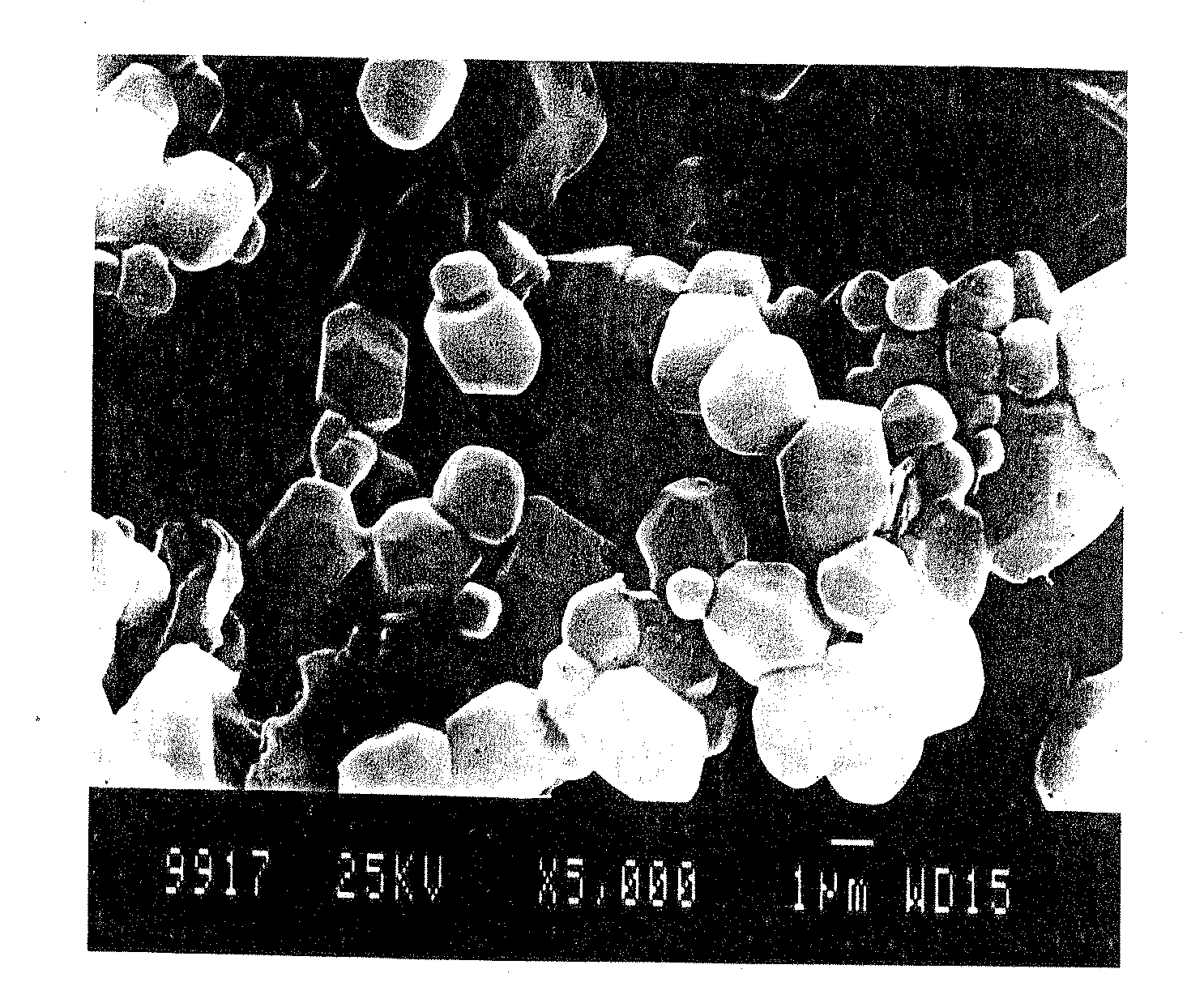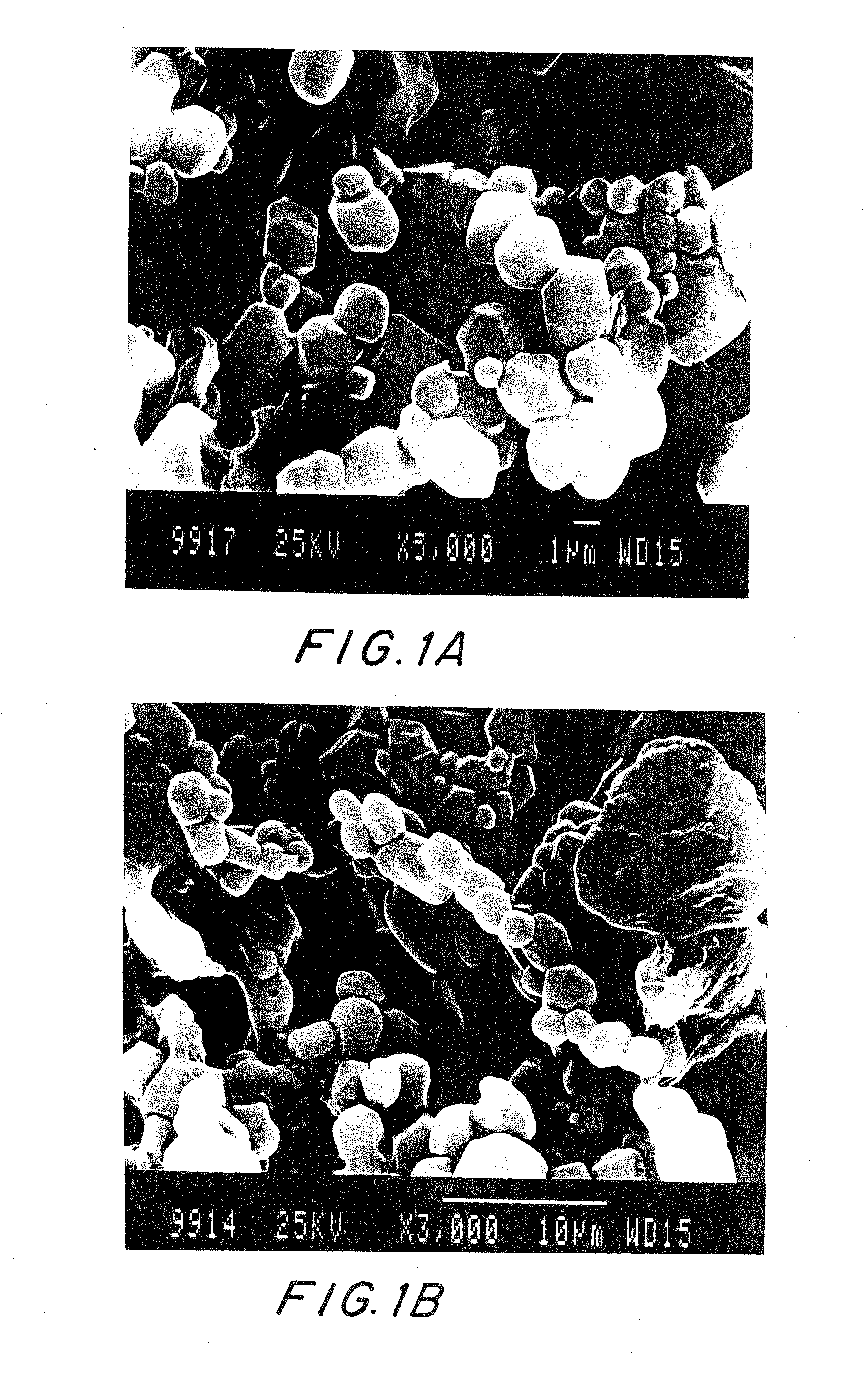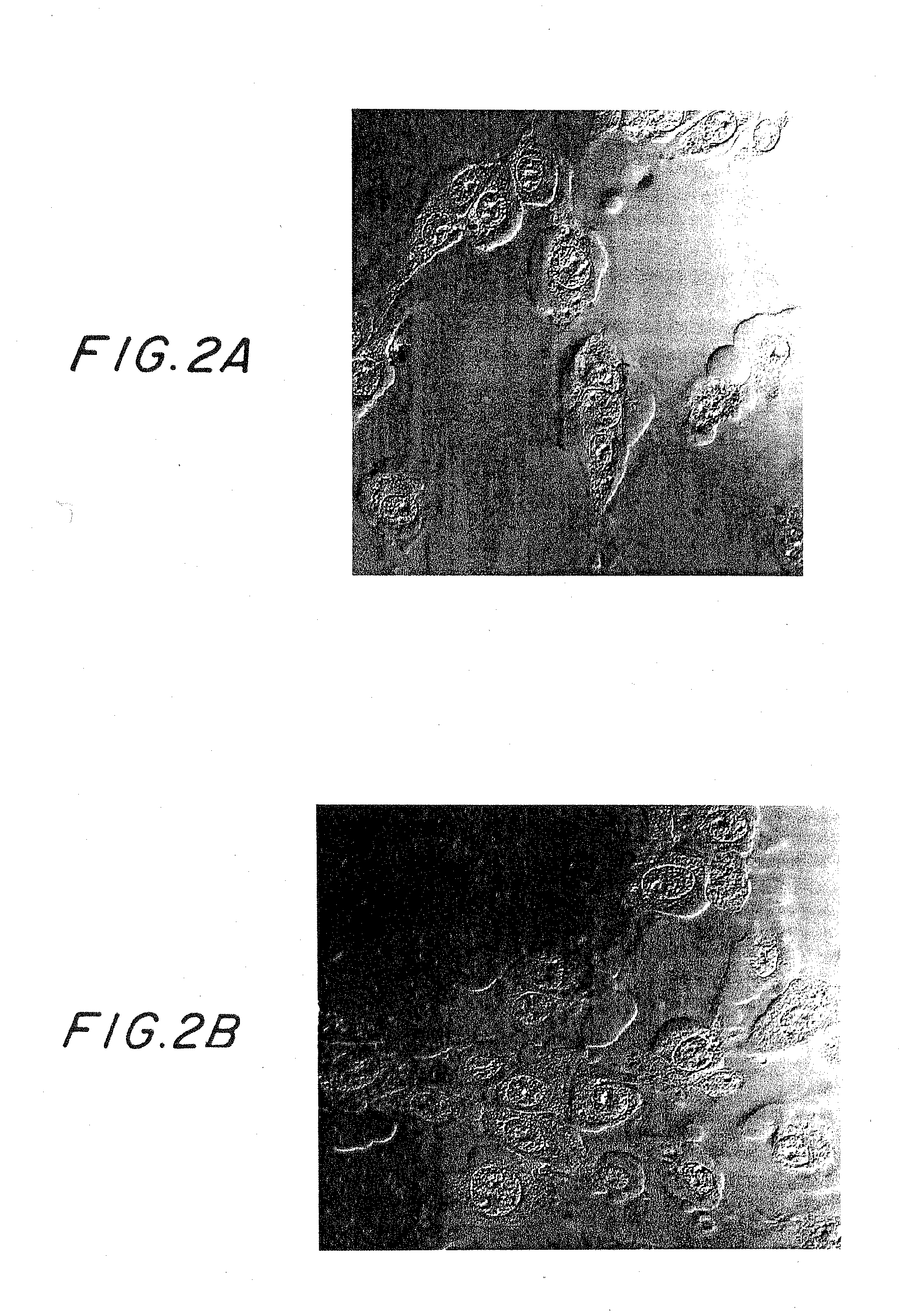Lipidated glycosaminoglycan particles and their use in drug and gene delivery for diagnosis and therapy
a glycosaminoglycan and lipid-based technology, applied in the field of drug delivery system, can solve the problems of limited targeting ability of biopolymers structured as microparticulates or nanoparticulates, limited retention and stability in circulation, and difficulty in using drug encapsulating biopolymers
- Summary
- Abstract
- Description
- Claims
- Application Information
AI Technical Summary
Benefits of technology
Problems solved by technology
Method used
Image
Examples
example 1
Structural Studies of Micro-Gagomers
[0113]The structural data provided here (FIGS. 1A and 1B) was obtained by means of Scanning Electron Microscopy (SEM). Both parts of FIG. 1 are fields from the same batch, at two different magnifications (see information stamped by the device itself at the bottom of each figure). Three features are demonstrated by these results: (1) these data constitute a confirmation of the particulate nature of these polymers; (2) these data also constitute a confirmation of the size range (see 1 μm bar in FIG. 1A); and (3) some details are provided on the shape of the particles.
[0114]The particles are seen to be heterogeneous with respect to size. This is seen in FIG. 1A and more so in FIG. 1B. This is an expected outcome, since microscopy was done on the whole preparation, prior to fractionation into the nano- and microparticle populations. The magnification ranges applied under the microscope for use in SEM favor that of the microparticles.
example 2
Chemical Bonding
[0115]Since the lipid amino group was crosslinked to the carboxylic residues of hyaluronic acid, there should be a decline in the number of free carboxylic acids from free hyaluronic acid to the gagomer. The more lipid bound, the more extensive should be the decline of free carboxylic acid groups. Moreover, from the extent of free carboxylic acid loss, it is possible to measure the lipid to hyaluronic acid stoichiometry. Using a carboxylic acid assay, it was possible to measure the expected decline. It could also be estimated that, in the microparticles, about 33% of the glucuronic acid residues are occupied by lipid molecules, wherein in the nanoparticles only about 20% of the glucuronic acid residues are occupied by lipid molecules.
example 3
Physicochemical Details and Properties of the EtBr Gagomer Formulation
[0116]The efficiency of entrapment of drugs or other bioactive agents in the gagomers and the kinetics of drug efflux for small molecular weight drugs were determined using absorbency in an ELISA plate reader, with appropriate wavelengths for each given entrapped entity.
[0117]Typical results of the efficiency of entrapment are shown in Tables 4 and 5 of the microparticles and nanoparticles, respectively.
TABLE 4Micro-Gagomers: Efficiency of Drug Entrapment and Half-Lifeof Drug EffluxEncapsulation Efficiency (%)Half-Life ofEntrappedByDrug EffluxEntityThermodynamicsBy Kinetics(Hours)Fluorescein49.6 ± 4.840.6 ± 5.87.9Chloramphenicol39.3 ± 3.930.5 ± 1.928.2Mitomycin C49.4 ± 2.544.3 ± 2.720.1Doxorubicin52.4 ± 6.350.2 ± 1.235.3BSA32.0 ± 2.5DNA74.5 ± 2.8
TABLE 5Nano-Gagomers: Efficiency of Drug Entrapment and Half-Life ofDrug EffluxEncapsulation Efficiency (%)Half-Life ofEntrappedByDrug EffluxEntityThermodynamicsBy Kinetic...
PUM
| Property | Measurement | Unit |
|---|---|---|
| molecular weight | aaaaa | aaaaa |
| particle size | aaaaa | aaaaa |
| particle size | aaaaa | aaaaa |
Abstract
Description
Claims
Application Information
 Login to View More
Login to View More - R&D
- Intellectual Property
- Life Sciences
- Materials
- Tech Scout
- Unparalleled Data Quality
- Higher Quality Content
- 60% Fewer Hallucinations
Browse by: Latest US Patents, China's latest patents, Technical Efficacy Thesaurus, Application Domain, Technology Topic, Popular Technical Reports.
© 2025 PatSnap. All rights reserved.Legal|Privacy policy|Modern Slavery Act Transparency Statement|Sitemap|About US| Contact US: help@patsnap.com



